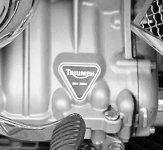mfogiel
Veteran
Hi, I am new to this forum, so I would much appreciate some expert advice. I want to try a rangefinder mainly as an ideal everyday carryaround camera.
I have come back to photography as a serious hobby after some 30 years of holiday snapping, as soon as I realized I could recreate a full workflow without a darkroom thanks to the progress in modern photo printers.
I am using various formats now, between film and digital, but I am slowly converging versus predominantly B&W photography with film, and some portraiture with the digital. In 35mm I am using a Nikon FM3A with Zeiss ZF lenses, and the experience is very rewarding. There are some issues though, like some difficulty to focus in dim light, especially with the WA, a less than ideal weight (better than digital SLR's or MF, but still...), and above all a relative difficulty to eliminate camera shake from ambient light pictures.
So, having seen some impressive statements from rangefinder users about their ability to handhold, I'd like to find out if anybody has actually made any tests about the critical shutter speeds for handholding, comparing various rangefinders. My friendly salesman in a photo store reckons, that film Leicas have an inherent edge in handheld shots because of the extremely light cloth shutter.
Has anybody actually experienced a difference between the results with the same lens between, say an M7, Zeiss Ikon and/or a Bessa ? I intend to try lenses up to 50, maybe 75mm, so the telephoto issue is not a problem here.
I have read on Erwin Put's site, that according to his experience, anything less than 1/200 ( I think he was relating to a 50mm lens) can degrade the image substantially. On the other hand, I've read extensive tests done with a Nikon D2x, which substantially confirm, that (at least with digital) the old rule of using the shutter speed equivalent to the reciprocity of your focal length (in 35mm standards) suffices to get 10 out of 10 sharp images on par with tripod made shots.
So where is the rangefinder truth?
I have come back to photography as a serious hobby after some 30 years of holiday snapping, as soon as I realized I could recreate a full workflow without a darkroom thanks to the progress in modern photo printers.
I am using various formats now, between film and digital, but I am slowly converging versus predominantly B&W photography with film, and some portraiture with the digital. In 35mm I am using a Nikon FM3A with Zeiss ZF lenses, and the experience is very rewarding. There are some issues though, like some difficulty to focus in dim light, especially with the WA, a less than ideal weight (better than digital SLR's or MF, but still...), and above all a relative difficulty to eliminate camera shake from ambient light pictures.
So, having seen some impressive statements from rangefinder users about their ability to handhold, I'd like to find out if anybody has actually made any tests about the critical shutter speeds for handholding, comparing various rangefinders. My friendly salesman in a photo store reckons, that film Leicas have an inherent edge in handheld shots because of the extremely light cloth shutter.
Has anybody actually experienced a difference between the results with the same lens between, say an M7, Zeiss Ikon and/or a Bessa ? I intend to try lenses up to 50, maybe 75mm, so the telephoto issue is not a problem here.
I have read on Erwin Put's site, that according to his experience, anything less than 1/200 ( I think he was relating to a 50mm lens) can degrade the image substantially. On the other hand, I've read extensive tests done with a Nikon D2x, which substantially confirm, that (at least with digital) the old rule of using the shutter speed equivalent to the reciprocity of your focal length (in 35mm standards) suffices to get 10 out of 10 sharp images on par with tripod made shots.
So where is the rangefinder truth?


